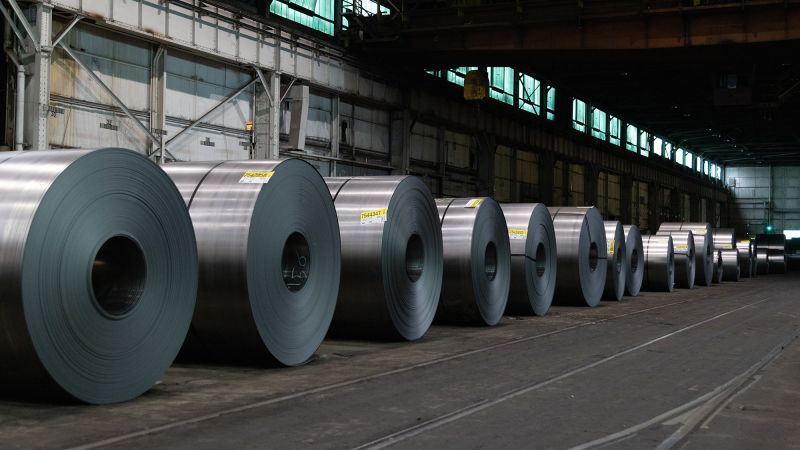In a significant development within the American manufacturing landscape, **Nippon Steel** has secured a deal to acquire **100% of U.S. Steel**, which historically stood as one of the most valuable corporations worldwide and a foundational pillar of American industrial prowess. This announcement was officially communicated by both parties on a Wednesday in December 2023, highlighting the finalization of their partnership.
The acquisition agreement stipulates that Nippon Steel will purchase U.S. Steel shares for **$55 each**, resulting in a total valuation of **$14.1 billion**. Despite this acquisition, U.S. Steel’s brand identity will remain intact along with its headquarters located in **Pittsburgh, Pennsylvania**. However, notable terms have been established whereby the **U.S. government** will have a say in pivotal operational decisions concerning the company. Among these, President **Donald Trump** has been granted **veto power** over major operational changes such as idling plants or adjustments to production and staffing levels.
Interestingly, the acquisition proceeds amidst Trump’s previous opposition to the deal, which he initially characterized as an “investment” rather than an outright buyout. “It’s an investment, and it’ll be a partial ownership (by Nippon),” Trump remarked shortly before approving the agreement. Emphasizing a sense of national oversight, he declared, “It will be controlled by the United States, otherwise I wouldn’t make the deal.”
This ownership transition had faced scrutiny earlier, as it was blocked by **President Joe Biden** in the last days of his administration, citing national security concerns. Additionally, Trump opposed the deal during his campaign but later acknowledged improvements made by Nippon, including a commitment of **$14 billion** in investments for enhancements to U.S. Steel facilities, although only **$11 billion** is secured through the terms established between Nippon and U.S. Steel in collaboration with the U.S. government.
In a more public display of endorsement for the acquisition, Trump spoke at a rally situated near a U.S. Steel facility, addressing the steelworkers present and assuring them of the deal’s benefits. “They kept asking me over and over, and I kept rejecting it, no way, no way, no way,” he recounted. Later, he reflected on how negotiations had evolved beneficially for workers, reinforcing his commitment to oversee the arrangement closely while promising no layoffs or outsourcing for a minimum span of a decade.
It is noteworthy, however, that while some local labor union officials expressed positivity towards the acquisition, the **United Steelworkers (USW)** union remained apprehensive. The union’s statement questioned the adequacy of the promises made regarding job security and operational protections, even in light of the veto powers granted to Trump and future presidents.
Addressing the historic significance of U.S. Steel, it was once emblematic of American dominance in the industrial sector, famously being the first corporation to achieve a valuation exceeding $1 billion shortly after its inception in **1901**. U.S. Steel played an integral role in manufacturing materials critical to the construction of numerous American infrastructures from automobiles to bridges and contributed significantly to military efforts during **World War II**.
However, the company has faced relentless declines since its peak in the post-World War II era, transitioning from being the leading steel producer in the United States to a much smaller player today. With only **14,000 U.S. employees**, U.S. Steel is no longer the industry leader and has become a relatively minor employer, with **11,000 of its workforce** affiliated with the United Steelworkers union.
In conclusion, this monumental acquisition marks a pivotal moment in the steel industry and reflects broader trends within global investments and the regulatory environment concerning American industries. As Nippon and U.S. Steel move forward, both opportunities and challenges lie ahead, shaping not only the companies involved but also the future landscape of American manufacturing. This story has been developed further with additional context and recent updates.



